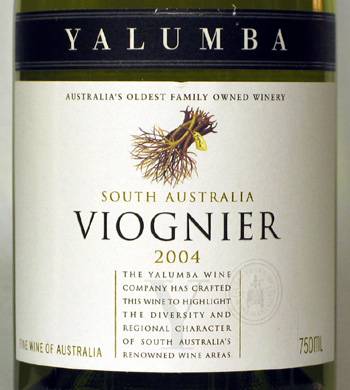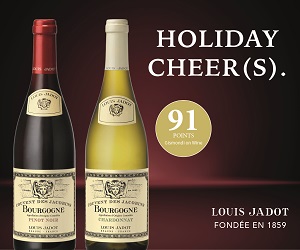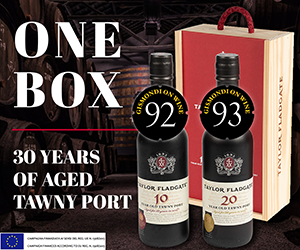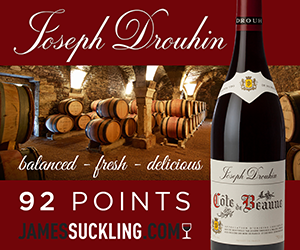A quick week in Australia judging at The Royal Adelaide Wine Show reveals how far North America lags behind in the acceptance of using screwcap closures on wine.

Frankly screwcaps are not even an issue in Australia where they reside with little resistance on wines sold in wine shops and restaurants.
It helps that riesling and most aromatic varieties (grapes thought to benefit the most from not coming in contact with a cork) are under screwcap but so too are many chardonnay and now more and more of the red varieties led by pinot noir.
After an intense year of opening, re-closing and generally being around screwcaps and synthetic corks, I have to admit that bottles with a cork closure are beginning to look a bit tired and old fashioned to me.
Screwcaps are not the only solution to dealing with faulty corks that lead to 'corked' wine but they are part of the answer for anyone that's had enough of the mouldy, wet cardboard, dank basement aroma that is the signature of "corked" wine.
For those restaurants still unsure about whether customers will make the switch, the International Wine Challenge in London reports "attitudes are changing to wine bottles sealed with a screwcap." In fact according to a survey conducted for Villa Maria Wines in the U.K., 64 per cent of 2701 respondents would buy, or have already bought, a screwcap wine.
More than 60 per cent of respondents also said they would not be embarrassed to take a screw cap wine to a party, assuming it was a good wine, although over a quarter said it would "depend on the party." Interestingly, of those who said they would normally spend #15 or more on a bottle, an even higher percentage (63 per cent) said they would take a screwcap to a party, suggesting that the acceptance of screwcaps is moving its way up the price range.
Today we take look at some of a slow-growing group of screwcap wines sold in the B.C. market, and I emphasize the word slow. Why not give them a twist this weekend and see what all the shouting is about? One thing is for sure, none will suffer from the dreaded "corked" taint leaving you better off before you even open the wine.
Everyone should find a use for the Lindemans Bin 75 Riesling 2002. Its peachy floral mineral nose will make it a standout party sipper. Its lime, baked green apple, peach and mineral flavours, that finish slightly sweet, also make it the perfect accompaniment to spicy Asian dishes. Best yet is the price -- it is only $11.49.
It's hard to believe that the Yalumba Viognier Y Series 2004 could get any better but the latest edition from Barossa Valley is the best yet. Look for a big spicy, honey, mineral, rose petal nose with ginger, grapefruit rind and creamsicle notes. It has plenty of ripe, almost oily fruit with more ginger, mineral, nectarine skin and honey flavours with a touch of apricot throughout its rich but crisp finish. As good as it is today, it will improve over the next year.
Intensity of flavour is seldom a problem for New Zealand wine producers who routinely use their long growing season to extract maximum flavour from the grapes. Nobilo Marlborough Sauvignon Blanc 2003 opens with an intense smoky bell pepper, jalapeno and gooseberry aroma and flavours. On the palate, it's elegant, round and fresh with a crisp, citrus-flavoured finish. A perfect match with mussels.
The final trio is part of a new screwcap series of wines from Wolf Blass that represent a radical departure for this Barossa-based producer whose calling card used to be oak, and plenty of it.
The Wolf Blass Riesling Gold Label 2003 is a mix of 66 per cent Eden Valley riesling with 34 per cent Clare Valley fruit. Look for cement, slate and green apple notes on the nose with white peach, floral aromas, and a fresh clean finish. Similar fruit in a soft, elegant but dry style mixes with juicy lime, mineral, white peach and green apple skin flavours. Modern classy, fresh and elegant.
One of Australia's hippest new sub-regions, Adelaide Hills, plays home to the Wolf Blass Pinot Noir Gold Label 2002. Rhubarb, spicy, smoky, black cherry fruit with streaks of shoe leather, licorice and jasmine mark the nose. It's still quite young and slightly tight around the neck so be sure to decant this wine for about 30 minutes before serving. Time out of the bottle will help highlight its sour cherry, spicy, licorice, smoky vanilla, rhubarb flavours. Duck confit is the match here.
The final wine is simply remarkable given the overt, oaky history of Wolf Blass,but there is nothing over the top about the Wolf Blass Chardonnay Gold Label 2003. Another Adelaide Hills advertisement, this enticing chardonnay reeks of smoky, spicy, mineral, creamy lees aromas with vanilla, honey and melon streaks. Elegant and flavourful, the emphasis is on citrus, green apple flavours and a honeyed peach finish. Long and well balanced, this is a sophisticated style at a very fair price.
Weekend Wine Tasting: The taming of the screwcap
Wine Lindemans Bin 75 Riesling 2002, South Eastern Australia
Price $11.49
UPC 012354087804
Score 86/100
Remarks Fresh, crisp and very appealing as a party sipper.
Wine Yalumba Viognier Y Series 2004, Barossa Valley, South Australia
Price $17.99
UPC 9311789475974
Score 90/100
Remarks Rose petals, creamsicle and ginger are only the beginning.
Wine Nobilo Marlborough Sauvignon Blanc 2003, Marlborough, New Zealand
Price $18.99
UPC 9414498315101
Score 88/100
Remarks Elegant, round and fresh with green apple, citrus flavours.
Wine Wolf Blass Riesling Gold Label 2003, South Australia
Price $20.62
UPC 098137333498
Score 89/100
Remarks Soft, elegant and dry with juicy lime and white peach fruit.
Wine Wolf Blass Pinot Noir Gold Label 2002, Adelaide Hills, South Australia
Price $30 to $33*
UPC 098137333429
Score 88/100
Remarks Mouth-watering sour cherry, spicy, licorice, smoky rhubarb flavours.
Wine Wolf Blass Chardonnay Gold Label 2003, Adelaide Hills, South Australia
Price $23 to $26*
UPC 098137333412
Score 90/100
Remarks If you think Wolf Blass chardonnay is old fashioned think again.

 quicksearch
quicksearch





